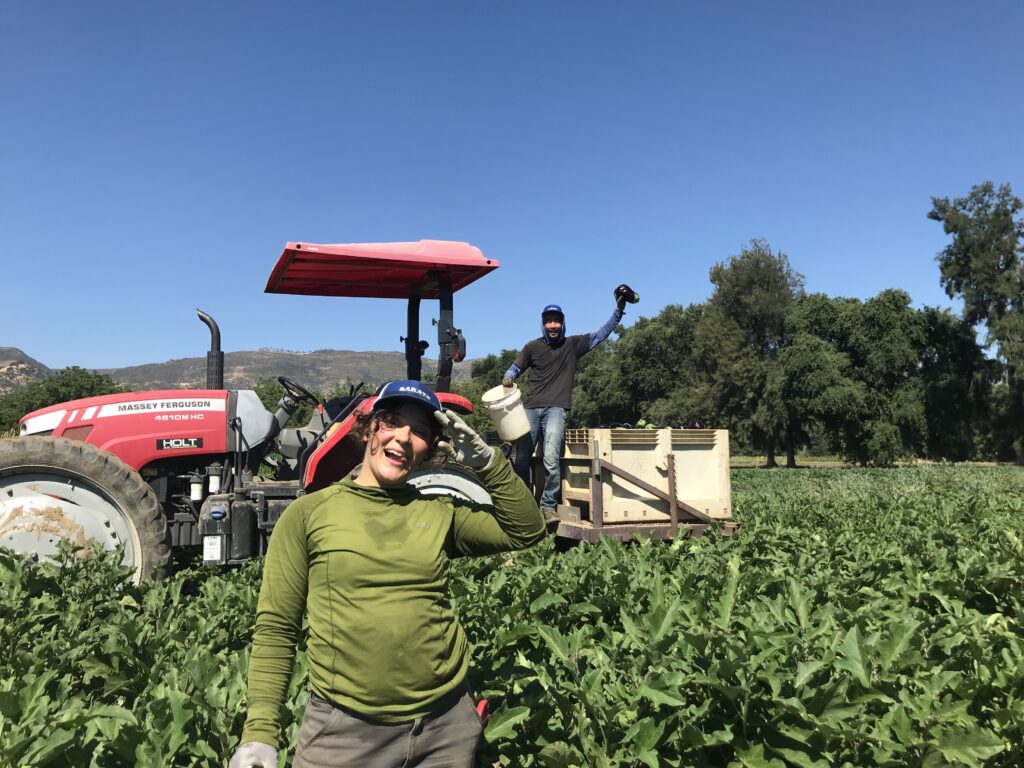
I think there’s only one word to describe last week: HOT. The coolest high temperature was Monday when it still got above 100, and it only got hotter as the week went on. Being outside when it’s 110 or above feels similar to the blast of hot, dry air you get when you open the door of an oven. Except that you can’t close the oven door, and you still have to work and get things done at home (including cooking), and for us, our work is outside. 100 is a standard summer temperature for us, and it’s also fairly normal that we’ll have heat waves for a week or two (here’s a chronicle of a few past heat waves), but that doesn’t mean that it’s comfortable or easy.
Health and safety are the primary concern when it gets this warm. We shifted our work day earlier to take advantage of the slightly cooler mornings, are taking more breaks, ended early on Thursday and Friday, and moved to tasks in the shade in the afternoon whenever possible. We’ve had several trainings stressing the importance of water, shade, and rest. Everyone receives an insulated half-gallon water bottle, each crew has a full dispenser of cold water, and everyone is trained to know the signs of heat illness and how to respond. All of these steps are common sense and most are reflected in California law. However, this is not the case around the country; there currently is no federal heat safety standard for agricultural workers, or other workers who are exposed to dangerous heat conditions in the workplace. Just last week, the Department of Labor proposed a rule to create national heat protections for indoor and outdoor workers, but this rule has several hurdles to overcome before becoming law (more about the rule, its timeline, implications, and more here). For the moment, only California, Colorado, Oregon, Minnesota, and Washington have heat stress standards, and Florida and Texas have banned cities and counties from passing laws to protect workers from heat.
In addition to protecting people from heat, there’s also our animals and plants to worry about. Animals are like us; they need lots of shade and water. For the plants, the irrigation team is very busy turning on and off drip lines and sprinklers. We learned during the drought years that our plants can survive on less water than we thought, and a mild amount of stress can produce better flavor in some crops, but we don’t want to over-stress or kill our plants.


The heat can supercharge ripening, meaning there’s more work to do in order to keep on top of tomatoes, eggplant, zucchini, melons, and more. The heat can damage flowers on many solanaceae crops (i.e. eggplants, peppers, and tomatoes) so perhaps in six weeks, we’ll have a dip in production, but for the moment, there’s plenty to harvest. On Friday I snapped a few pictures of the eggplant harvest team (Rye and the interns), Jonas unloading the beginning of our heirloom tomatoes, harvested by Alfonso and his team, and Chica starting the never-ending process of sorting tomatoes. A big project last week was finishing harvesting the potatoes to get them out of the ground before they roast. Once we do harvest everything, we need to be really careful about post-harvest handling, cooling things down so that they don’t go bad. More about that here.


It’s a bit mind-boggling that about a month from now, we’re going to start seeding and transplanting cool-weather fall crops like brassicas and carrots. We’ll be sticking those seeds and tender plants into a harsh, oven-like environment, but it’s the necessary timing if we want crops to harvest in fall when the summer bounty winds down.
Elaine Swiedler, CSA Manager
